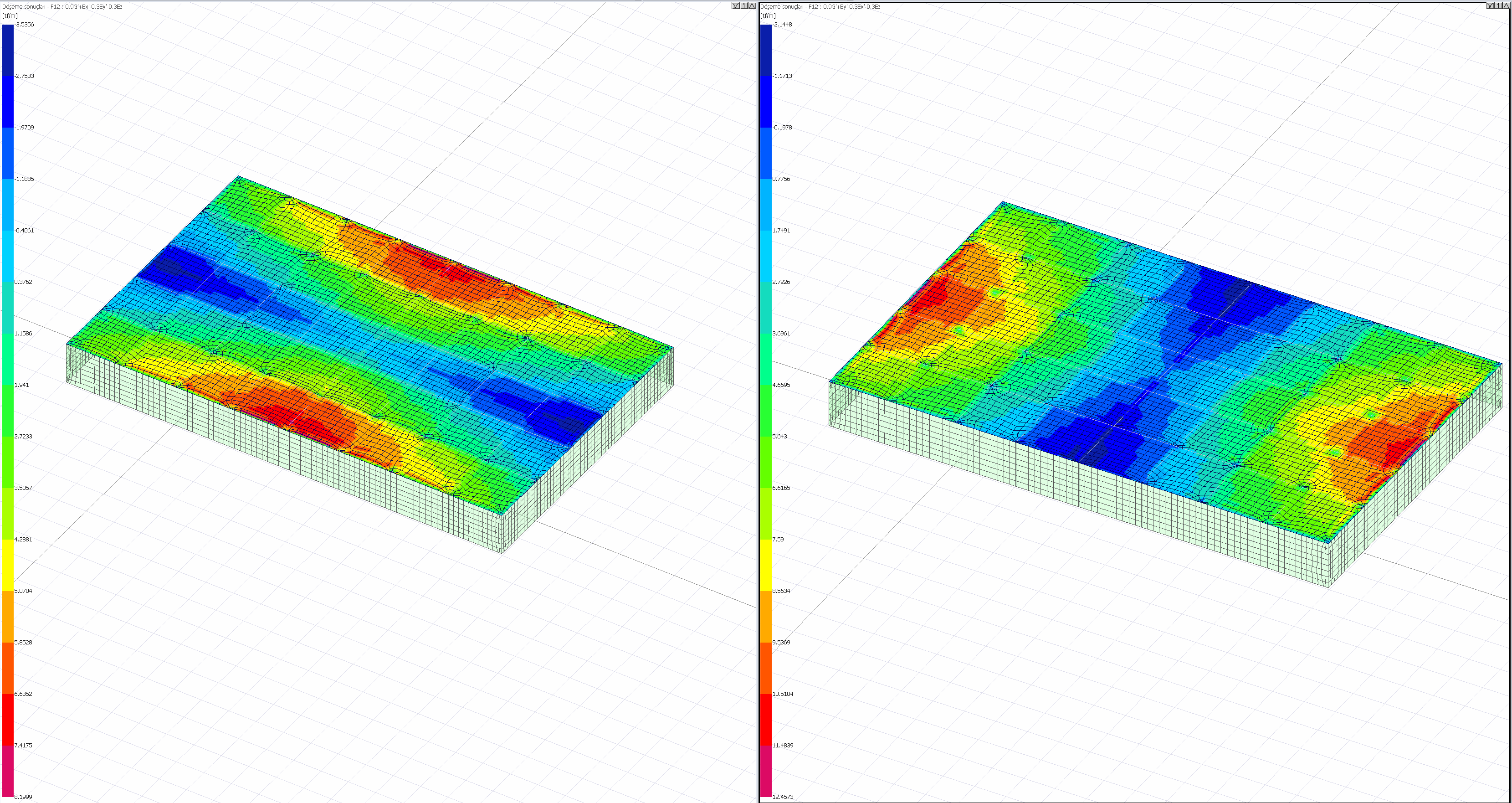Forces Acting on Basement Shear Walls (4.5.7.3)
As a result of the earthquake calculation, the forces transferred to the rigid perimeter walls in the basement floors are calculated automatically.
As a result of the earthquake calculation, the forces transferred to the rigid perimeter walls in the basement floors are calculated according to Article 7.11.5 of TBDY .
In rigid basement floors, basement curtains are more rigid than other parts of the building. For this reason, the stresses of the floors connected to the basement perimeter curtains are higher than the other floors. As explained in 4.5.7.2, transition floor floors are modeled with two-dimensional finite elements using the semi-rigid diagram solution. In the in-plane floor stresses that occur as a result of this modeling, the stresses transferred to the rigid basement perimeter walls in the transition floor floors occur. The plan view of a building on the transition floor is given in the image below.

The floors here are solved with semi-rigid diaphragm acceptance and the floors are modeled with two-dimensional finite elements. As can be seen, the floors near the rigid perimeter walls received higher shear stresses. All floors including transition floors are checked and reported with the earthquake force calculation to be transferred in strong direction from the floor to the curtain or to the curtain arm calculated by using TBDY Article 7.11.5 and the Slab Stress Controls calculated using the Article 7.11.3 of TBDY .

Since transition floors are the main element that provides load flow between normal floors and very rigid floors, it must be shown by calculations that the transfer is performed properly. If necessary, additional connection reinforcement calculations should be performed. These controls are carried out and reported automatically. See: Collector elements to Transfer Force Between Diaphram (Slab) and Shearwall

Next Topic
